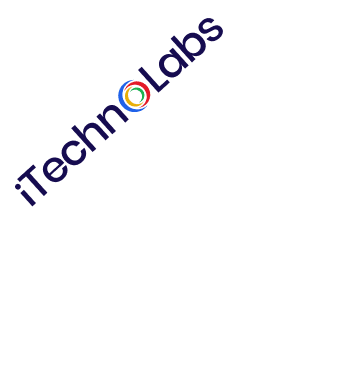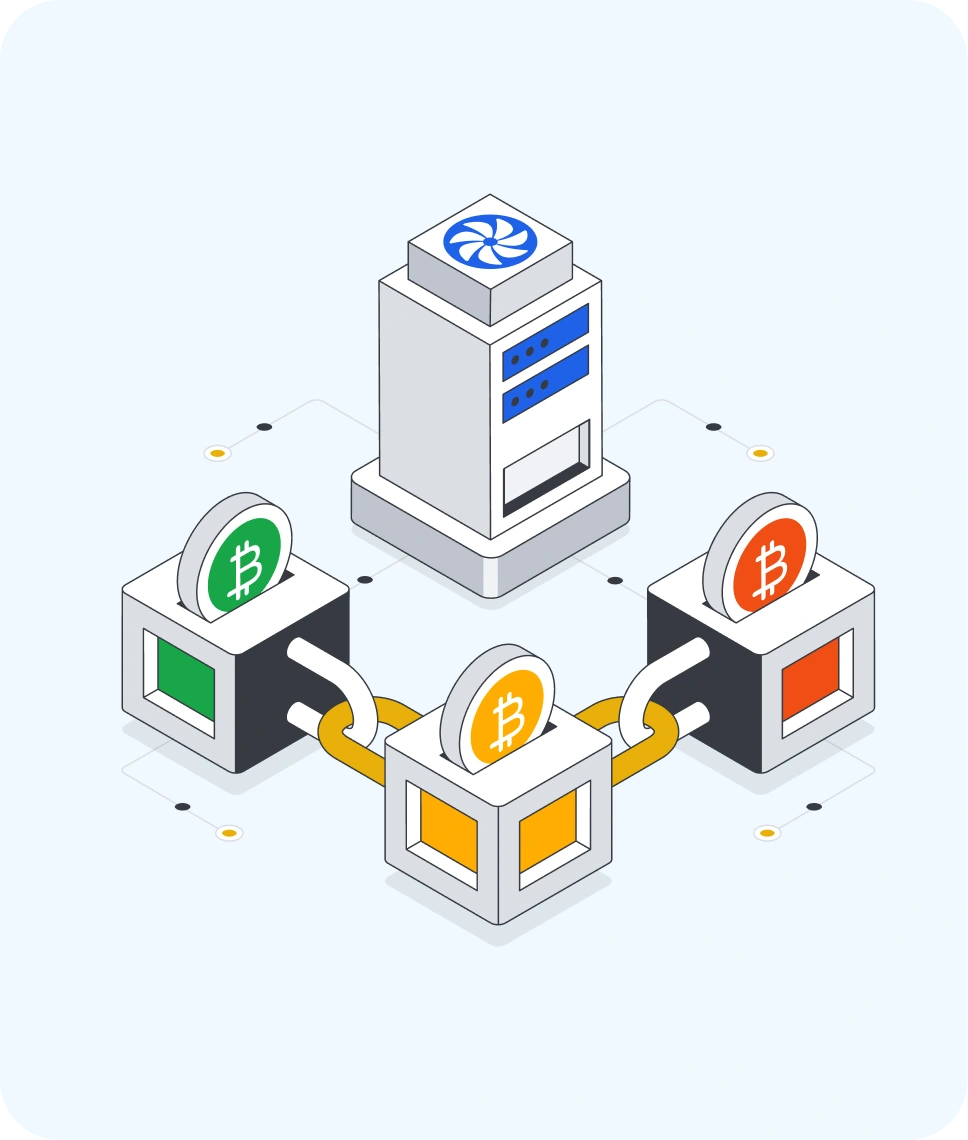In today’s hyper-competitive world AI is not an option but a necessity. Every company in the world is looking to integrate AI into their systems to improve productivity, save cost, increase sales and many more. But here the question comes to choose between off-the-shelf AI and custom AI.
Off-the-shelf is readymade AI tool, with less initial cost, and limited personalization, while custom AI comes at a higher cost but with full control and ownership. Under off-the-shelf AI you get chatbots and automation tools. On the other hand custom AI lets you build solutions tailored to the specific requirements of your business. If you are also confused between the two, don’t worry, read this blog to learn the difference between the two and choose the best one according to your business .
What is Off-the-Shelf AI?
Before learning about the difference between custom AI agents vs off-the-shelf AI, it’s important to understand what these both mean. Off-the-shelf AI refers to a pre-build system which is ready to use and is not tailored for any business. It is a general AI tool available for the public. These tools are best for businesses which want quick results without much customization. Companies can simply purchase these and integrate into their existing processes without much hassle. These solutions are best when you don’t have time to make a custom product.
The key features of off-the-shelf AI solutions are:
- Quick deployment
- Super easy to use
- Low cost
- Often comes as SaaS (software as a service) products
The examples of off-the-shelf AI tools are as follows:
- ChatGPT for support automation
- Jasper for content writing work
- Gemini and Hubspot for content marketing and sales
- Hugging face for building and training machine learning models
What is Custom AI?
Custom AI refers to artificial intelligence solutions built from the ground up for a specific business. It uses the company’s own data, workflows, and objectives. Custom systems are trained to reflect the organisation’s internal logic, tone, and processes. They integrate tightly with existing software, such as CRMs, ERPs, or other internal tools. The goal is not just to automate common tasks, but to enable capabilities that are unique and differentiated for that business.
The advantages of custom AI are many, especially for businesses with complex needs. First, full ownership of data and intellectual property gives greater control over security and privacy. This matters a lot in regulated sectors. Second, custom AI scales better for growth. Instead of paying rising licensing fees or vendor tiers, costs are tied to infrastructure and usage. Third, flexibility: you can tailor logic, process flows, and user experience exactly to your needs rather than adapting your business to the constraints of a generic tool. Finally, custom AI can yield competitive advantage: features that are hard for others to replicate.
Custom AI has costs and challenges. The upfront investment is high: data collection, cleaning, annotation, model training, infrastructure, and hiring or partnering with technical experts are all required. Development times are longer—weeks or months—compared to off-the-shelf solutions. Maintenance and ongoing iteration also fall on the business: updates, model drift, scaling, and compliance must be managed proactively. Data readiness is often a stumbling block: messy, incomplete, or unstructured data severely slows projects.
When is custom AI the right choice? Several factors point in its favour. If your business operates in a highly regulated environment (healthcare, finance etc.), or handles sensitive / private data, custom AI allows embedding of compliance, auditability and security from the start. If your workflows are unique and you need features that generic solutions don’t support (fine-grained control, niche logic, custom user experience etc.), custom AI becomes essential. Also, if you aim to scale significantly, or want long-term cost stability rather than recurring licensing fees, a custom approach tends to pay off over time.
In sum, custom AI is about long-term fit, ownership, and differentiation, at the cost of time, money, and technical complexity. Businesses that value precision, control, and scaling will lean toward custom AI. Businesses that need speed, minimal cost, and simpler use-cases may prefer off-the-shelf solutions or hybrids. The decision depends on trade-offs: short-term agility vs long-term advantage; upfront expense vs recurring costs; generic vs tailored features. Custom AI is not always the best for every scenario. It becomes powerful when aligned with a business’s strategy and capability.
Suggested article: Artificial General Intelligence (AGI): Future of AI in 2025
Comparison of Custom AI and Off-the-Shelf AI

Choosing between off-the-shelf AI vs custom AI isn’t straightforward because both differ in terms of cost, maintenance, compliance, scalability, flexibility, and many more factors. It’s only after comparing both types of solution on different parameters, that one can decide which one to go with. Below we are comparing off-the-shelf AI and custom AI on 6 factors so you get an idea of how they both vary.
1. Cost and Licensing
Many organizations often start with off-the-shelf AI because the initial cost looks nothing. For example, the monthly cost of ChatGPT, which is $2000, looks fair. However, when we fast forward it to 3 years, you see that it forces the users to buy the pro models and integrations at a higher cost. The pricing terms lie in the hands of vendors which can give you surprise at any point of time.
On the other hand, the cost of custom AI might be higher in the starting let’s say $100k to $200k, but you get complete ownership. No surprises from vendors are included in this model and no scaling penalties either. After a few years the investment will pay you back.
Monthly vs Annual vs 3-Year Cost of Custom AI vs Off-The-Shelf AI
- Monthly: Off-the-shelf – $2k to $5k, while custom can cost $100k upfront
- Annual: Off-the-shelf – $24k to $60k, while custom will incur a single amortized investment
- 3 years: Off-the-shelf can exceed $70k to $210k while custom act as a fixed asset with full ownership
2. Deployment Speed
Another difference between off-the-shelf AI and custom AI is the deployment speed. With off-the-shelf AI you can go live in weeks, with the help of a chatbot or analytics module. However, faster deployment speed often hides some scary truths: the adoption starts lagging when workflows feel unnatural.
On the other hand, custom AI takes months rather than weeks but the adoption is comparatively smoother since it is designed around your processes and not any random company’s.
Deployment Timeline
- Off-the-shelf AI – Deploys in weeks but lags when users fight the tool
- Custom AI – Deploys in months but adoption is smoother and it feels built in
3. Flexibility
Off-the-shelf AI tools are standard tools which possess very little customization capability. They are designed for the general use cases and do not allow much room for personalization. This usually becomes a problem when you want some extra features specific to your business needs.
In contrast, the custom AI allows you to make changes according to your unique business processes, requirements, and categories. Off-the-shelf AI is like a prebuilt toy which you have to play in the way it is made, while custom AI is like clay which you can mould however you want.
How this works in real world
- Off-the-shelf AI – Rigid workflows, limited features, minimal customization ability
- Custom AI – Models are trained according to specific needs and requirements of your business and evolves as your business evolves
4. Scalability
Off-the-shelf AI works perfectly in the beginning but as the scale increases its performance declines. For example, 1,000 tickets a week work smoothly, but when the tickets are more than 50,000, it forces you to purchase an expertise plan.
Conversely, custom AI works on cloud native infrastructure and continuously learns as the data grows. So instead of re-negotiating licenses, you will optimize architecture.
Here’s how it will look
- Short-term (Off-the-shelf AI): Easy to launch, but scaling often turns out to be a costly affair
- Long term (custom AI): It scales easily as learns from the data growth
5. Compliance & Security
The next difference between custom AI and off-the-shelf AI is that off-the-shelf AI continuously possesses compliance and security concerns. The data is always stored on vendor data centres which is the critical issue for sensitive sectors like healthcare, finance, banking, etc. Your sensitive and confidential data is completely dependent on vendors’ terms and conditions.
On the other hand when using custom AI the security protocols come built in. The measures like audit trials, encryption, GDPR compliance, all come within the framework.
How governance is ensured in AI tools
- Traceability and audit logs for every model action
- Built in adherence to GDPR, HIPPA
6. Maintenance
In off-the-shelf AI, you don’t have to maintain anything as it is completely done by the vendor. They are the ones who handle updates for the software. However this often means that you are dependent on them for the updates. If they are delaying a feature which you desperately want, you can’t do anything, you just have to wait.
Custom AI gives you both the control and responsibility. You can decide when to push any update or feature. It does require more planning but ensures the roadmap matches your strategy and requirements.
How maintenance looks in real world
- Off-the-shelf: Updates automatically but controlled by vendors.
- Custom AI: Continuous effort but complete control and ownership.
Quick Glance
| Factors | Off-the-Shelf AI | Custom AI |
| Cost and licensing | Affordable in the beginning but gradually increases | Higher upfront but stable long term cost |
| Scalability | Scales only with rising costs or vendor tiers | Cloud-native, build for long term |
| Flexibility | Standard use cases, Very less scope of flexibility | Hyper customization which aligns with your goals and requirements |
| Deployment speed | Comparatively less but slows down if workflows clash | Usually takes months to build, but adoption is smoother |
| Compliance and security | Controlled by vendor, risky in regulated industries like healthcare, finance, telecommunications, aerospace | Governance embedded in design already (GDPR, HIPPA, BFSI) |
| Maintenance | Managed by vendor, but influence is limited | Effort is ongoing, but full control of roadmap |
When to Choose Custom AI vs. Off-the-Shelf AI?

Choosing between custom versus off-the-shelf AI is not as easy as it seems. Depending on the industry type the organizations use the right type of AI for their processes. For example, an AI tool used by a retail startup will not be the same as a bank. Here is how you can choose between custom AI vs off-the-shelf AI:
1. Retail and E-commerce
Retailers often use off-the-shelf AI tools such as chatbots and recommendation engines. AI chatbots can handle customers queries quickly and save the time for staff for other high-value activities.
This works perfectly for initial years but as the company grows the standard AI tools start showing their limits. They are not able to deliver hyper-personalized recommendations and therefore custom AI becomes a necessity.
Summary
- Off-the-shelf AI: It works best for basic personalization, product listing, and service chatbots
- Custom AI: This is required for hyper-personalization and dynamic pricing
2. Healthcare
In healthcare accuracy and compliance are of utmost necessary. In off-the-shelf AI, the hospitals get triage bots and appointment schedulers. This works fine for surface level but when you need help with diagnostics and treatment planning, that’s where off-the-shelf AI gets challenged. The challenges are lack of explainability, weak integration with hospital data, and GDPR/HIPAA compliance issues.
Summary
- Off-the-shelf AI works for admin automation and triage chatbots
- Custom AI is required for diagnostics and treatment recommendations
3. Finance and Banking
In finance, off-the-shelf AI can be useful for basic fraud alerts and pilot credit scoring. But regulatory demands for transparency and risk control often outstrip what generic tools offer. Custom AI becomes necessary for complex tasks: large-scale fraud detection, risk modelling, regulatory reporting, and contract review. Financial institutions need models trained on their own data so they can explain decisions, satisfy auditors, control where data is stored, and avoid vendor lock-in. Although custom AI costs more up front and takes longer, it gives better compliance, ownership, and long-term cost advantages.
4. Manufacturing
Manufacturers can start with off-the-shelf tools for predictive maintenance and simple anomaly alerts. These provide quick wins in downtime reduction. However, across multiple facilities, diverse machinery, and varying data sources, generic models often fail. Custom AI trained on internal sensor and operational data enables optimization across plants, adaptive scheduling, and workflow automation. It can detect complex anomalies specific to unique equipment. While the investment in data engineering and bespoke model design is high, the payoff is smoother operations, better yield, and scalable maintenance.
5. SMBs and Customer Support
Small and mid-sized businesses benefit from off-the-shelf AI tools because they’re inexpensive and fast to deploy. Bots for FAQ, order tracking or generic support give immediate coverage and help handle volume. But as SMBs grow, off-the-shelf solutions often lack flexibility: they may not support local language, deep personalization, or integration with niche business workflows. Custom AI lets SMBs embed brand voice, support multilingual or regional variation, adapt to unique customer journeys, and automate internal processes. The result is more aligned customer experience and better scaling, though requiring more setup and data work.
Also, read: AI Model Collapse Prevention
Conclusion
Choosing between off-the-shelf AI and customer is not easy. Both types of AI solutions come with their own pros and cons. Off-the-shelf AI comes with faster deployment speed, minimal investment but lacks control and ownership. On the other side, custom AI gives full control, hyper-personalization features but at a higher cost.
Off-the-shelf AI is perfect for your business if you need speed and you are looking for chatbots. Custom AI is good for you if security and compliance are your top most priority. You can even choose a hybrid path where you will first start with an off-the-shelf model and then gradually switch to custom AI. No matter which type of model you choose iTechnolabs is here to provide you the best fit that matches your business requirements. Contact us today to discuss your needs and our AI experts will develop the best AI model for your business.
FAQs
1. What are the 5 types of AI agents?
The 5 types of AI agents are:
- Simple reflex agents
- Model-based reflex agents
- Goal-based agents
- Utility-based agents
- Learning agents
2. What are custom AI agents?
Customer AI agents made by organizations to meet their specific needs and requirements. Unlike off-the-shelf AI they are not designed for general purpose but cater to the requirements of a single business.
3. What is off-the-shelf AI?
Off-the-shelf AI is a pre-built AI tool which has predefined features and is available for general usage. It does not come with customization ability so every organization has to use it in the way it is available.










